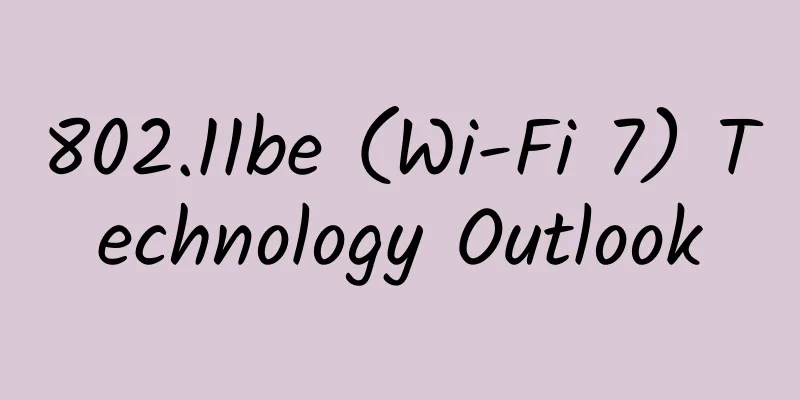In the 5G era, will WiFi be eliminated or become more powerful?

|
There have been many debates recently about the coming of the 5G era and the possible disappearance of WiFi. At the Guizhou Digital Expo, Lv Tingjie, a professor at Beijing University of Posts and Telecommunications, said that in the future 5G will be the basis for 4k and 8k videos, and WiFi is already an outdated technology that can hardly carry such a large bandwidth. But in my opinion, WiFi will not be eliminated, but will continue to evolve. As early as 2017, Bloomberg published an article saying that WiFi may be phased out with the advent of the 5G era, pointing out that major mobile operators in the United States currently provide unlimited data traffic services, and consumers no longer need to turn on WiFi networks to avoid expensive traffic fees. This may cause WiFi to phase out. We know that there are high expectations for 5G in China. Operators need to improve their performance and develop new businesses such as the Internet of Things, cloud, and big data. These businesses are highly compatible with the 5G era. Once 5G networks are officially commercialized, they are expected to leverage the Internet of Things industry. Not long ago, the Ministry of Industry and Information Technology officially issued 5G commercial licenses. China Mobile, China Telecom, China Unicom and China Broadcasting Corporation have all obtained 5G licenses as they wished. Currently, 5G has entered a critical period of commercial deployment around the world, and judging from the timetable for 5G commercial deployment in my country, the timetable for 5G commercial deployment is roughly in 2020.
As we all know, the Internet speed brought by 5G is far faster than the current 4G experience. It is said that the speed of 5G can reach 10-100 times that of 4G, and it can transmit 8K resolution 3D video in real time, or download a 3D movie in 6 seconds. But the problem is that the commercial use of 5G in 2020 does not mean that 5G will have completely seamless coverage across the country. It will require a relatively long construction cycle to gradually and slowly replace and cover. According to the law, the existing 4G LTE will continue to evolve and become an important part of the 5G platform, and 4G, 3G, and 2G networks will continue to work after 5G is commercialized. In addition, the actual communication speed of 5G is subject to external environment, including equipment, number of users, and base station coverage. Of course, the advantage of 5G over WiFi is that its faster network speed and low latency solve the problems of WiFi's network transmission delay, slow speed, and weak security. However, WiFi also has advantages. First, its traffic is cheap, and the usage environment is more indoors, which makes it more stable. Second, it is exclusive to each household and also bears the scenario of large amounts of data traffic. What shortcomings and problems does 5G currently face?Although the 5G network has a bright future, its shortcomings are also obvious. One is capacity. The capacity of the terminal base station connected to 5G is limited. Once the capacity is exceeded, the user experience and speed will decline, and the theoretical speed will not be reached. At present, each base station of the 4G network can accommodate up to 1,200 users. The same is true for the 5G network. If the number of users exceeds the limit, the network speed will fluctuate and decrease. The second is weak penetration. Because 5G networks use millimeter wave technology and have higher frequencies than 4G networks, 5G signals have weaker "wall penetration" capabilities than 4G signals, because they are electromagnetic waves with weak penetration and rapid attenuation, which determines their weak anti-interference ability and less stability than WiFi. Fourth, the base station coverage is low, which means that 5G's wide coverage requires the construction of more base stations, which requires a longer time for base station replacement. What is the coverage rate of 5G base stations? According to industry insiders, the current 5G pilot coverage is relatively weak. In the 2G era, a base station could cover more than 5 kilometers, while in the 4G era, a base station can only cover about 1 to 3 kilometers, and in the 5G era, a 5G micro base station can only cover 100 to 300 meters. In addition, the 5G signal has poor penetration, and the line is disconnected as soon as it enters a building.
The reason for the low coverage of 5G base stations is that 5G uses a higher frequency band. The lower the communication frequency, the stronger the diffraction ability of the radio waves. The higher the frequency, the only way to rely on direct radiation and reflection will be to create many dead spots. In addition, the 5G macro base station signals deployed in the high frequency band face a large link loss problem when passing through walls indoors, and the indoor depth coverage is limited. Simply put, the high-frequency band has a short propagation radius, while the medium and low-frequency bands have a long propagation radius, and the latter has better coverage. Therefore, the coverage area of 5G base stations is naturally smaller than that of 4G. Fifth, the scarcity of frequency resources is in conflict with the realization of unlimited traffic in the 5G era. When talking about base station layout, we have to talk about frequency resources. In fact, as early as 2017, major operators began to test unlimited data packages, which rekindled consumers' hopes for unlimited data. However, the reason why unlimited data is difficult to achieve is that wireless frequency resources are limited. Unlike fixed networks, wireless data transmission depends on bandwidth. The frequency resources of each of the three major operators are precious resources, and the current traffic that a base station can bear is several hundred megabytes. The number of access users to each base station is also upper bounded. If too many users have preferential access, it will affect the Internet speed of all users. Therefore, the network quality of operators continues to decline as the number of users increases. With the current surge in demand for entertainment consumption, the speed of 4G networks is getting faster and faster, and the contradiction between frequency resources has become increasingly prominent. In the era of high-definition video and live broadcast, VR games, and short videos, the increase in the scale of unlimited traffic users will lead to frequency resources being occupied by a few people, and the traffic will instantly reach tens or hundreds of megabytes. If excessive and unlimited use is allowed, the base station will not be able to bear it. According to the arrangement of the Ministry of Industry and Information Technology, China Telecom obtained 5G experimental frequency resources with a total bandwidth of 100MHz in the 3400MHz-3500MHz band; China Mobile obtained 5G experimental frequency resources in the 2515MHz-2675MHz and 4800MHz-4900MHz frequency bands; China Unicom obtained 5G experimental frequency resources with a total bandwidth of 100MHz in the 3500MHz-3600MHz band. Truly unlimited data packages need to break the limitations of limited frequency resources. It is hard to say whether the 5G era can break through the technical bottleneck of scarce wireless frequencies. If the charges are high and wireless data packages are difficult to achieve, the status of Wi-Fi will still not be replaced. Why is it said that WiFi and 5G networks will coexist for a long time?There are more reasons why WiFi and 5G networks will coexist for a long time. It also involves the strengthening of competitiveness caused by the self-evolution and upgrading of WiFi. First, even if 5G comes, home Internet access will not abandon fiber optics and switch to 5G. It is important to know that after the current fiber optic network is connected to the home, the terminal and the device are connected via WiFi. The so-called WiFi is to convert the wired signal into a wireless signal and connect to the network via radio waves. It is inseparable from stable bandwidth or optical fiber. However, fiber optic access is a network infrastructure that the country has invested heavily in for a long time and is currently planning to expand, and it will not be abandoned in the short term. Second, from a technical point of view, 5G is faster than 4G because it uses a higher frequency band, and WiFi is also being upgraded. In October 2018, the Wi-Fi Alliance released a new Wi-Fi technology standard, namely Wi-Fi 6. The prospects of WiFi6 are no less promising than those of 5G. By improving the data coding efficiency to increase the transmission throughput, WiFi6 also increases the data throughput and speed. The stability and low latency performance of the actual application of the WiFi6 standard may be comparable to 5G. According to industry sources, the new generation of WiFi standard is 802.11ax (also known as WiFi6). The previous two generations of technology, 802.11n and 802.11ac, were named WiFi4 and WiFi5 respectively. Multi-user multiple input multiple output technology (MU-MIMO) and orthogonal frequency division multiple access (OFDMA) were added, which enable WiFi6 to have better ability to serve multiple devices at the same time.
According to the measured data of the first batch of 5G users in the United States, the current downlink speed of 5G network mobile phones is 400Mbps~600Mbps (equivalent to a download speed of 50-60MB/s), and earlier, He Gang, president of Huawei's terminal mobile phone product line, used Huawei MateX to measure the 5G download speed, and the result was 1Gbps. However, there is currently a saying that Wi-Fi 6 is an expansion of Wi-Fi 5 and is more suitable for processing a large number of data requests at the same time, which is about three times the current maximum speed of Wi-Fi 5. To some extent, in the 5G era, the speed of WiFi has also increased by one level, because WiFi will also be upgraded to 5GHZ, that is, WiFi also has the fifth generation of frequency band. There was an article on IT Peer Network that stated that Wi-Fi 6 will increase the efficiency of a single network by about 4 times, which in turn will increase the average data throughput in crowded areas connected to Wi-Fi 6 by about 4 times. In addition, it is revealed that the Wi-Fi 6 standard incorporates a large number of 5G key technologies, such as OFDMA, MU-MIMO, 1024QAM, etc., optimizes device power consumption and coverage capabilities, and is fully suitable for supporting various IoT applications in smart homes. The theoretical downlink speed of 5G is 10Gb/s, while the fastest downlink speed of WiFi 6 is 9.6Gb/s. In other words, WiFi6 is becoming more and more similar to 5G, and the two are on par with each other in terms of speed. Third, the most direct one is the economic account. In the 5G era, everyone is generally worried that the speed and traffic will increase significantly, but the cost will increase significantly, and free WiFi has obvious advantages. The 5G high-speed network era is an important time node for operators to increase traffic charges in order to improve performance. Therefore, many users have expressed concerns about traffic package charges for 5G users, large-bandwidth traffic consumption, additional power consumption and price increases that are more likely to come with the 5G era. In addition, the market will also face a series of problems such as additional power consumption caused by improved performance of terminals supporting 5G and how to achieve multi-antenna design in a limited space. Some users have mentioned that if many hardware devices including your indoor TV, mobile phone, tablet, computer, etc. are connected through 5G network, how much will the monthly fee be? In the homes of residents, because the performance of optical fiber and WiFi is improving rapidly and the cost is lower, there is basically no major experience pain point. As long as users are rational enough, they will definitely not throw them away and choose to spend money to buy 5G flying base stations. Therefore, if the 5G tariff increases dramatically, more traffic demand will obviously be diverted to the WiFi network. Since 2009, China Mobile has invested heavily in building millions of WiFi hotspots across the country. The launch of these WiFi hotspots has also played an important role in diverting traffic from mobile data networks. WiFi is not marginalized, but has the potential to riseTherefore, based on the above analysis, the status of WiFi is not marginalized compared to the past, but has the possibility of rising. Because in the past the application scenarios of WiFi were limited to consumer Internet, but in the future it may open up scenarios and application space for industrial Internet. For example, in the automotive industry, manufacturers are currently divided over whether to use Wi-Fi or 5G as the communication standard for connected cars. Although many manufacturers agree to adopt the 5G standard, brands such as Renault, Toyota, and Volkswagen are supporting Wi-Fi, and the European Parliament supports Wi-Fi as the communication standard for connected cars. Even from the perspective of consumer scenarios, indoor space will be the natural advantage territory of Wi-Fi in the long run. The layout rhythm of 5G, the popularity of its base station construction, and the coverage of its base stations will require breaking into the private indoor territory from the wide coverage territory outdoors and eliminating small networks through large networks. At present, it is a task that cannot be completed in a short time, and WiFi6 is obviously more competitive than in the past. Although the evolution of new 5G technologies in the future will have a certain impact on WiFi, WiFi is also evolving, which determines that WiFi still has a large market in high-privacy application scenarios (such as home interiors, shopping malls, and office areas). From this point of view, using WiFi as a supplement indoors, the division of labor for outdoor 5G coverage may not change. At present, if you want to realize the Internet of Things and connect various smart devices to the Internet, you may still need a wireless router equipped with WiFi6 technology. Its status as a "smart gateway" is difficult to replace. Therefore, WiFi will not be eliminated, but will continue to evolve. 5G and WiFi both have applications and imagination space in the field of industrial Internet of Things. The two are not in a replacement relationship, but a relationship of mutual promotion, competition and coexistence. Therefore, as 5G is coming, WiFi will also evolve. Instead of questioning whether the 5G era will eliminate WiFi, it is better to think more about what new opportunities the WiFi6 era will bring. |
<<: Detailed explanation of remote method invocation RMI, which is very similar to the idea of RPC
>>: User Datagram Protocol (UDP) in plain language
Recommend
Domestic IPv6 system deployment speeds up and IPv6 application boom is coming
The current Internet Protocol address IPv4 addres...
5G popularization is further promoted, and 5G messaging may be commercially available in mid-to-late October
[[426636]] At the 5G Message High-level Forum of ...
Under the SDN wave, where will traditional routing technology go?
introduction "All martial arts come from Sha...
RackNerd Spring Festival Promotion: KVM annual payment starts at $13.99, 1.5GB/20GB/3TB/multiple computer rooms
RackNerd is a foreign VPS hosting company founded...
[11.11] CUBECLOUD 15% off all items, Los Angeles special monthly payment starting from 20 yuan, annual payment buy one get one free
CUBECLOUD is a Chinese hosting company founded in...
The roadmap for building a digital China in the next five years has been released to develop seven key industries including cloud computing
[[385931]] The draft outline of the 14th Five-Yea...
Liu Duo from CAICT: There are 32,000 5G base stations used in the industrial Internet
At the 2020 China 5G+ Industrial Internet Confere...
What is the relationship between NFV and SDN?
NFV and SDN are popular technologies that have em...
Java Server Model - TCP Connection/Flow Optimization
Usually, our applications do not need to handle t...
Guidelines for Protecting RS-232 Serial Connections
RS-232 connections are an integral part of serial...
Illustrated Network: Access Control List (ACL), which is as powerful as a firewall
In the world of computer networks, one of the mos...
Let’s talk about the privacy and security of 5G technology
On March 17, 2022, the European Parliament's ...
Huawei China ICT Ecosystem Tour 2018 Series of Activities Invite You to Win the "Ecological Era" Together
[51CTO.com original article] In March this year, ...
Yang Xuqing of Softcom Wisdom: Leveraging the advantages of AI and working with Huawei Ascend to promote industry development
As one of Huawei Ascend's important ecologica...
2G and 3G withdraw from the Internet of Things! The Ministry of Industry and Information Technology issued a major document
On May 7, the Ministry of Industry and Informatio...









